A busman’s holiday, part 2
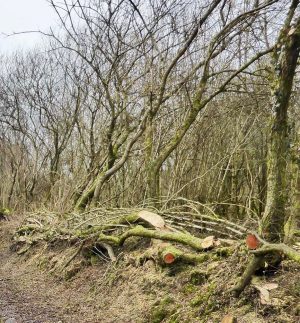
Having put in place the basic infrastructure so that I can store tools, equipment and firewood and have somewhere for shelter and to work, my attention turned to the top two priorities on my ‘to do’ list – well actually, numbers 2 and 3, number one will always remain ‘relax, do nothing and just enjoy it’.
Firstly there is a semi-circular clearing near the eastern side of what is essentially a triangular plot. I have planted a ‘family copse’ here. We have a large collection of nieces and nephews spread across three continents and between them they currently have 16 ½ children [sixteen here and one on the way]. I am truly hopeless at remembering birthdays so instead I shall dedicate a tree to each of this latest generation of our family.
I have planted a mix of common alder, birch, aspen, rowan and small leaved lime; all relatively quick-growing species tolerant of exposed sites. This will also add some species diversity to what is currently a block of oak and ash planted around 20 years ago, with a shelter belt of 4 rows of sitka spruce along the western side.
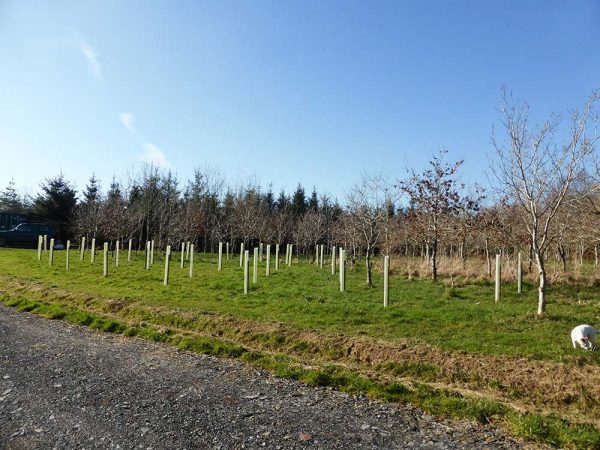
the newly-planted ‘family wood’,
I cut some ¾” inch thick rounds from a piece of 3” diameter ash and after a bit of experimentation with a pyrography tool – much like a soldering iron, but with a range of ‘nibs’ – my wife Indira burned each child’s name to create name tags, so that they can identify their own tree. I have planted around 25 trees here; plenty of scope for future expansion of the clan.
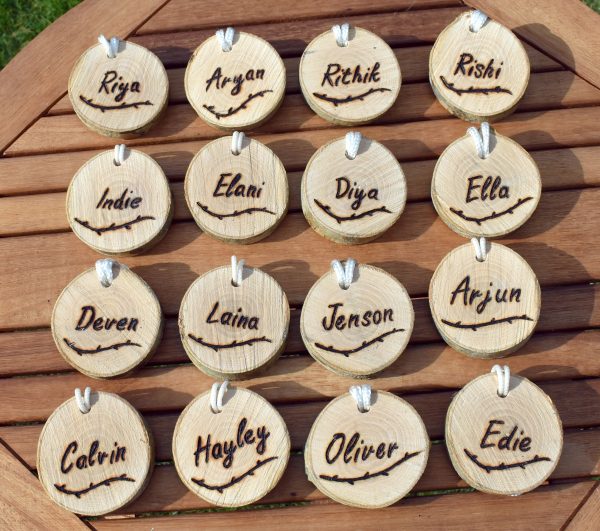
name tags
Then there is the northern boundary. These woodlands were established on what had been a farm made up of about 20 fields. As we prepared the individual woodlands for sale, we were careful to preserve as many of the original features [hedges, ditches, gateways etc] as we could.
But sadly the hedges and hedge-banks have not been maintained for at least 20 years. I started by ‘up-righting’ the neglected hedge, taking out all of the material which was growing out into the wood. This process has freed up a strip of land about 80 metres long by 6 – 8 metres wide. Once this preparation work was completed, I enlisted the help of colleagues far more experienced in and skilled at laying hedges ‘Devon style’ than I am. Some of the better, straighter trees were left to grow as ‘standards’ along the bank. The majority of the hedge was laid ‘single comb’ that is, just one side [my side] of the hedge, but after consultation with my woodland neighbour, the final 30 yards or so was done ‘double comb’ – both sides of the hedge.
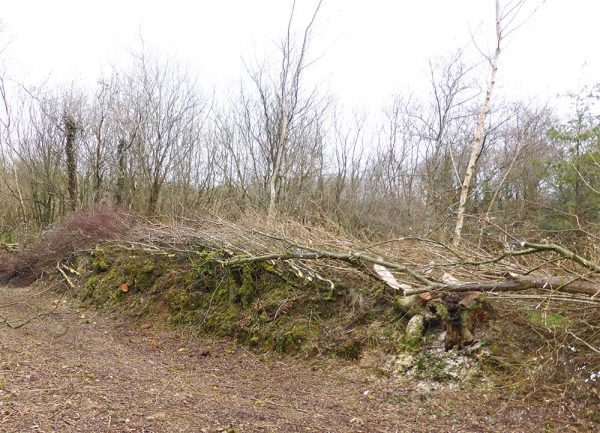
All the while I was cutting material out of the hedge – which is a mix of mostly hazel and willow, hawthorn and blackthorn, with a few bits of oak, birch and beech – I was on the lookout for straightish or interesting stems which may make good raw materials for walking sticks. These are set aside to dry – it is no use trying to straighten green sticks (using steam) – they will just revert to their original shape.
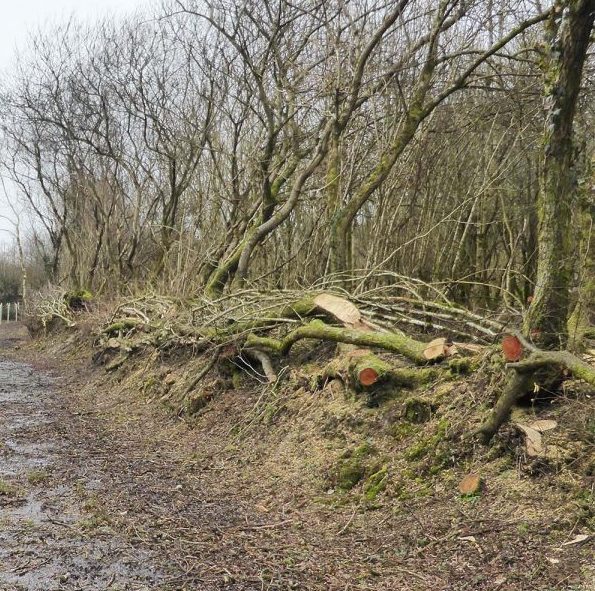
The remaining materials, of which there is a surprising amount [I had already taken out a lot during the up-righting, but as much again came out during the laying] are processed as follows:
- Anything of 3” diameter or more is cut into 4 foot lengths and goes on the firewood stack for subsequent cutting and splitting
- Smaller sticks go on the chipper pile – my woodchip paths need regular topping up and I also use the chippings to mulch around newly planted trees
- Straggly ‘tops’ and unruly thorny stuff – which clog up the chipper – go straight on the bonfire.
As well as creating the extra space mentioned above, laying the hedge will provide homes, food and shelter for small mammals and birds as well as a more attractive boundary bank over the coming years.
Comments are closed for this post.
